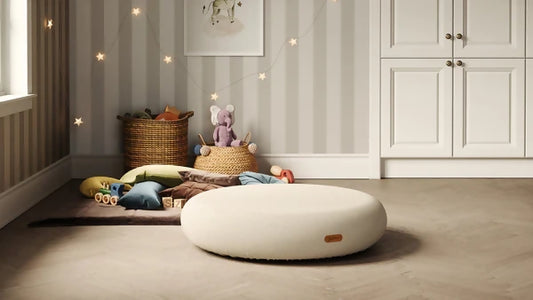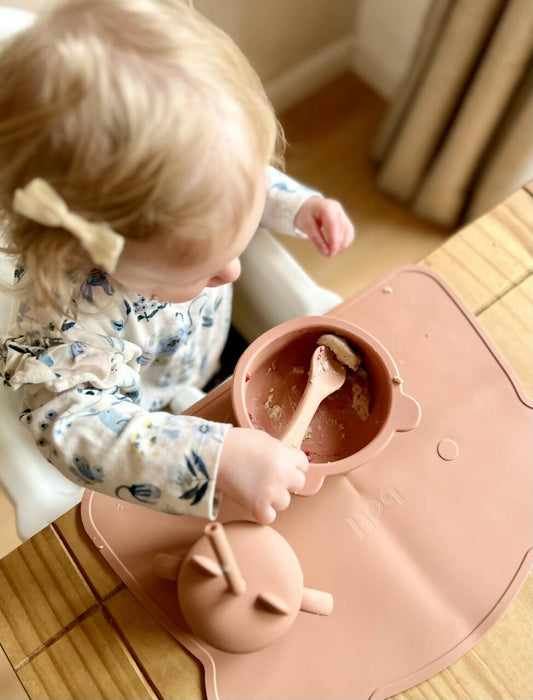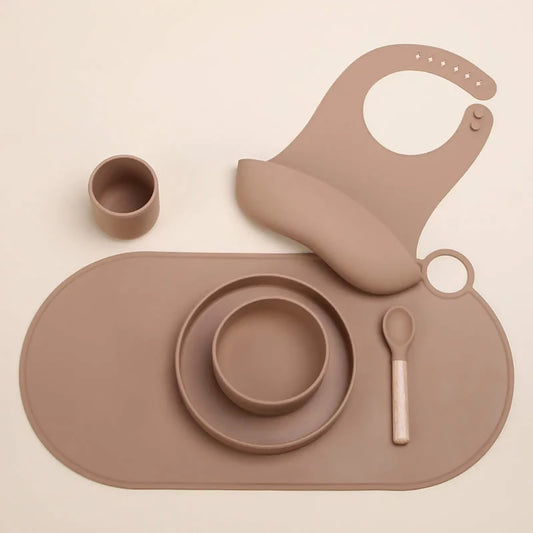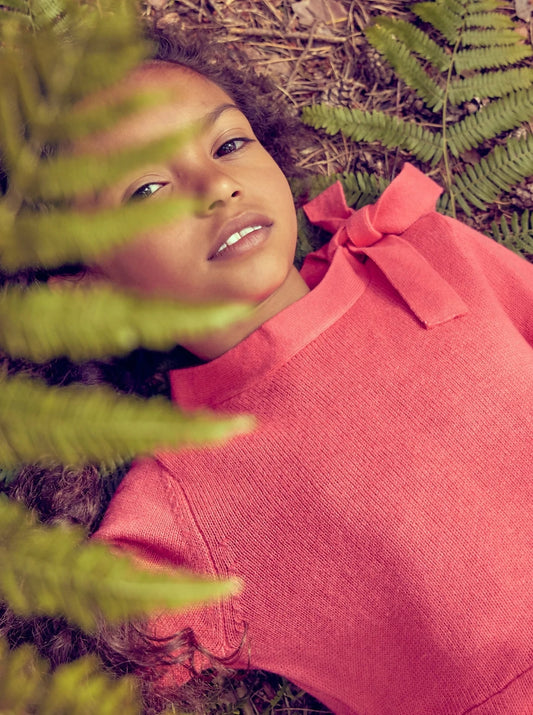
The Power of Open-Ended Play: Unlocking Creativity and Development in Children
Share
In today’s fast-paced world, where schedules and screens often dominate our lives, it’s easy to overlook the profound impact of simple, open-ended play. Open-ended play is one of the most valuable gifts we can offer our children. But what does it really mean, why is it so beneficial, and how can you incorporate it into your child’s daily life?
At KIDDYKIND, we believe in the power of play to shape young minds and foster creativity. In this blog, we’ll explore open-ended play, its benefits, and why it’s a cornerstone of early childhood development.
What is Open-Ended Play?
Open-ended play refers to activities or toys that allow children to use their imagination, creativity, and problem-solving skills in a limitless way. Unlike toys or games with a clear, predefined outcome or rules (such as board games or puzzles), open-ended play is flexible. It encourages children to invent their own stories, solutions, and methods of engagement. There are no fixed "right" ways to play—just endless possibilities.
Imagine a wooden balance board. Instead of a toy with specific instructions or a set function, a balance board invites a child to explore and experiment. They might use it as a slide, a bridge, a seesaw, or even a rocket ship. The possibilities are as boundless as their imagination.
Why Is Open-Ended Play Beneficial?
Open-ended play offers a wealth of developmental benefits for children. Here are some key reasons why it’s so important:
1. Fosters Creativity
Open-ended play allows children to use their imagination in novel ways. Instead of following a strict set of instructions, children create their own narratives, scenarios, and solutions, which builds creativity and fosters a sense of independence.
2. Supports Problem-Solving Skills
When children engage with open-ended play, they are often tasked with figuring out how to make things work or how to solve a challenge. This problem-solving process strengthens their cognitive abilities, helping them to think critically and flexibly.
3. Encourages Emotional and Social Development
Open-ended play often involves role-playing and social interaction, whether with peers or through imaginary play. These interactions teach children about empathy, cooperation, negotiation, and communication, all crucial skills for emotional intelligence and social development.
4. Boosts Physical Coordination
When toys or activities are open-ended, children naturally engage in physical movement. Whether they’re balancing on a board, building a tower, or constructing a fort, they improve their motor skills and coordination while having fun.
5. Promotes Intrinsic Motivation
Because there are no right or wrong ways to engage with open-ended play, children are more likely to feel motivated from within, rather than seeking external rewards. This intrinsic motivation helps them stay engaged longer and learn more deeply.
What Does Montessori Say About Open-Ended Play?
Maria Montessori, one of the pioneers of modern education, recognized the importance of open-ended play in a child’s development. Montessori believed that children are naturally curious and capable learners, and that play is an essential vehicle for discovery and growth. Her approach emphasised providing children with materials that foster self-directed learning and creativity.
In Montessori classrooms, the environment is designed to offer opportunities for open-ended play, using simple, natural materials that children can manipulate, explore, and use in a variety of ways. For example, rather than offering children a toy that tells them exactly what to do (like a toy with buttons that light up or make sounds), Montessori-inspired spaces offer building blocks, fabrics, and objects that children can engage with in their own unique ways.
Montessori’s philosophy aligns perfectly with the principles of open-ended play: respect for the child’s ability to direct their own learning, the importance of hands-on engagement with the world, and the understanding that play is a vital part of learning.
The Opposite of Open-Ended Play: Closed-Ended Play
The opposite of open-ended play is closed-ended play. Closed-ended toys or activities are those with a specific, predetermined outcome. Think of toys that come with rigid instructions or set objectives—such as puzzles, action figures with specific roles, or toys that play music at the push of a button. While these types of toys can be educational in their own right, they don’t offer the same depth of engagement that open-ended play does.
Closed-ended play is structured and doesn’t leave much room for creativity or exploration. While it can be valuable for teaching specific skills, it lacks the freedom of expression and problem-solving that open-ended play nurtures.
Open-Ended Play and Sustainability: A Greener Choice
Another compelling reason to embrace open-ended play is its environmental benefit. Many open-ended toys are designed to be durable, versatile, and long-lasting. For example, a balance board can be used in countless ways over the years, rather than becoming obsolete after a few uses or after a child outgrows it.
Because open-ended toys are often made from sustainable materials like wood or natural fibres, they tend to be more eco-friendly than their plastic counterparts. These toys are built to last, reducing the need for constant replacement and minimising waste. Additionally, when children engage with open-ended play, they’re less likely to rely on electronics or single-use plastic toys, which can contribute to environmental harm.
By investing in high-quality, open-ended toys, we can give our children more meaningful play experiences while also taking care of the planet.
Open-Ended Play Examples from KIDDYKIND
At KIDDYKIND, we offer a wide range of open-ended play toys designed to spark creativity, encourage physical activity, and promote sustainable play. Here are a few examples of how some of our toys can be used for open-ended play:
1. Balance Boards
A wooden balance board is one of the best examples of open-ended play. Your child can use it in countless ways: balancing on it for strength and coordination, using it as a seesaw, creating an obstacle course, or even turning it into a ramp for their toy cars. Its versatility means it can grow with your child and be used in various ways as they develop new skills.
2. Slides
A slide isn’t just a slide—it’s a tool for imaginative play. Whether it’s used indoors or outdoors, a slide can become part of a larger adventure, such as a mountain to climb, a waterfall to slide down, or a racecourse for toys. Slides encourage physical activity, balance, and coordination, all while stimulating creativity.
3. Building Blocks
Building blocks are another classic example of open-ended play. They can be used to create structures, towns, or entire worlds. Children can practise fine motor skills, explore architectural concepts, or simply let their imaginations run wild. The beauty of building blocks is that there’s no limit to what can be built, and each construction offers new learning opportunities.
4. Wooden Cars and Trains
Simple wooden cars and trains are perfect for open-ended play. They can be part of an imaginative journey or used to build tracks, race cars, or create entire storylines. These toys encourage movement, creativity, and problem-solving as children set up new adventures each time they play.
Conclusion
Open-ended play is a powerful tool for nurturing creativity, problem-solving, and emotional growth in children. By providing toys and activities that support this type of play, we can give our children the space to explore their potential, develop new skills, and experience the joy of discovery. At KIDDYKIND, we are proud to offer a variety of toys that encourage open-ended play, from balance boards to wooden cars, each designed to foster a love of learning and creativity that lasts a lifetime.
By investing in quality, versatile toys, you’re not only enriching your child’s development—you’re also making a more sustainable choice for the planet. So, let’s embrace the world of open-ended play and watch our children thrive!
KIDDYKIND is on a mission to change the way we shop for children. We want to make it quick and easy to find conscious baby and kids products from children’s clothing, footwear, wooden toys, natural bedding, baby essentials, weaning, arts & crafts and so much more, from wonderful planet-friendly brands.


















































